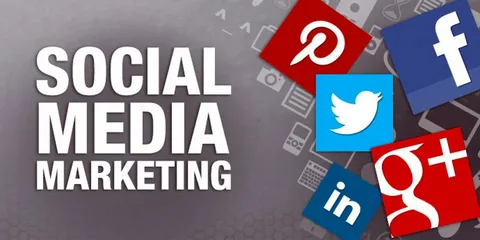Social media has become a dominant force in marketing over the past decade. Platforms like Facebook, Instagram, Twitter (now X), TikTok, and LinkedIn have given businesses a direct line to billions of users around the world. However, in recent years, there has been a growing wave of regulatory scrutiny, political interference, privacy concerns, and even outright bans on some platforms in certain countries.
This raises a serious question: What happens to marketing if social media is no longer available or becomes significantly restricted? Can marketers adapt and thrive without the tools they’ve relied on for so long?
In this article, we’ll explore how potential social media bans could reshape the marketing landscape, which strategies may rise in importance, and how brands can prepare for a future where digital engagement takes new forms.
Why Are Social Media Bans Happening?
Several countries have already banned or restricted social platforms. For example:
- China has long banned Facebook, Instagram, and Twitter.
- India banned TikTok and dozens of Chinese apps over data privacy and national security concerns.
- Pakistan and Iran have imposed temporary or partial bans on platforms like TikTok, YouTube, and Twitter over religious or political content.
- European Union regulators are demanding stricter privacy compliance from platforms, while the US continues to debate TikTok bans due to data security issues.
The reasons behind these bans usually fall into the following categories:
- Data privacy and surveillance concerns
- National security threats
- Political control or censorship
- Content moderation issues
- Mental health and youth protection
These bans are a wake-up call. Marketers need to diversify beyond social platforms and rethink how they connect with audiences.
The Role Social Media Has Played in Marketing
To understand the impact of potential bans, we need to acknowledge the enormous role social media plays:
- Brand awareness: Social media has helped brands go viral through visual storytelling, memes, influencer collaborations, and hashtags.
- Customer engagement: Companies can have direct conversations with customers and receive instant feedback.
- Targeted advertising: Platforms offer precise ad targeting based on demographics, interests, and behaviors.
- Sales and lead generation: Social commerce features let users shop directly on platforms like Instagram and Facebook.
- Analytics and insights: Brands gain real-time data about what content performs best.
The sudden loss of these tools would force a fundamental shift in marketing.
Marketing in a Post-Social Media Era: Key Changes
If social media bans continue or increase, marketers will need to explore alternative channels to reach their audiences. Here are some possible shifts:. Email Marketing Will Regain Power
Email marketing is a direct and permission-based form of communication. While it never disappeared, marketers may now double down on it for newsletters, product updates, and lead nurturing. Building a strong email list will become a top priority.
Content Marketing Will Dominate
Without social platforms to push content, websites, blogs, YouTube (if not banned), and podcasts will become core content distribution hubs. Long-form articles, videos, and educational content will help brands build trust and authority.
Search Engine Optimization (SEO) Becomes Essential
With less reliance on social media traffic, websites must be optimized to rank higher on search engines like Google. Organic search will be a major source of discovery. SEO strategies — including keyword targeting, on-page optimization, and backlinks — will be critical.
Influencer Marketing Will Evolve
Influencers won’t disappear — but they may move to independent platforms, such as newsletters, paid communities (e.g., Patreon), or exclusive events. Brands may collaborate through long-term content partnerships rather than viral Instagram stories.
Web3, AR/VR, and the Metaverse May Rise
If traditional platforms fall, emerging technologies like Web3, Augmented Reality (AR), and Virtual Reality (VR) may provide new ways to engage audiences. For example, brands may host events in virtual worlds or offer immersive product demos via AR.
Community-Building Will Be Key
With fewer algorithm-driven feeds, brands will build value-driven communities. This includes forums, private groups (like Discord or Slack), and brand-owned platforms. Community-driven marketing will focus on relationships over reach.
SMS and Messaging Apps for Marketing
As social media gets restricted, WhatsApp, Telegram, and SMS marketing could become powerful tools for direct communication — especially in mobile-first countries.
Case Study: India After the TikTok Ban
India banned TikTok in mid-2020. Many influencers and brands lost millions of followers overnight. However, this opened doors to Indian-made apps like Chingari, Roposo, and Moj. Marketers had to adapt by:
- Shifting to local platforms
- Creating content on YouTube and Instagram (which remained unbanned)
- Relying more on search and app-based marketing
- Partnering with influencers across smaller channels
This shift shows that while bans disrupt, they also create new opportunities.
The Importance of Owning Your Audience
One of the biggest lessons from social media bans is this: You don’t own your audience on third-party platforms. Algorithms change. Platforms shut down. Accounts get banned.
But when you build your audience through:
- Email lists
- Website subscribers
- Owned apps
- Offline relationships
…you gain long-term control and reduce your dependency on any single platform.
Preparing for the Future: What Marketers Should Do Now
- Diversify Your Channels: Don’t put all your efforts into one or two platforms.
- Invest in Content Assets: Build a library of blogs, videos, and downloadable content.
- Focus on First-Party Data: Collect data from your own channels instead of relying on platform-provided analytics.
- Build Communities: Engage audiences directly through forums, webinars, and local meetups.
- Stay Compliant: Follow data privacy regulations (like GDPR) to avoid bans or restrictions.
FAQs: Social Media Bans and the Future of Marketin
Q1: Will social media completely disappear in the future?
No, but certain platforms may become restricted or heavily regulated in some countries. Marketers must prepare for regional bans.
Q2: How can businesses market without social media?
Businesses can use SEO, content marketing, email newsletters, SMS campaigns, and community-building to reach their audience effectively.
Q3: What’s the best social media alternative for small businesses?
Email marketing, blogging, YouTube (if not restricted), and messaging apps like WhatsApp are strong alternatives for small businesses.
Q4: Are influencers still relevant without social media?
Yes. Influencers can build audiences through podcasts, blogs, newsletters, and platforms like Patreon or Substack.
Q5: What should I do if my business relies heavily on Facebook or Instagram?
Start diversifying now. Collect emails, create a website, run SEO campaigns, and explore other content formats and channels.
Conclusion
Social media bans are a sign that the marketing world is shifting. While these changes can be disruptive, they also encourage creativity, innovation, and long-term thinking. Marketers who focus on building relationships, owning their platforms, and creating valuable content will not only survive — they’ll thrive in the next era of digital marketing

